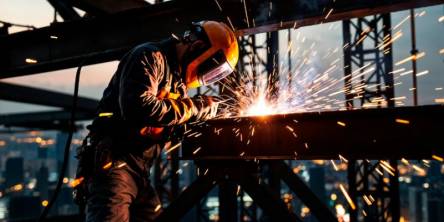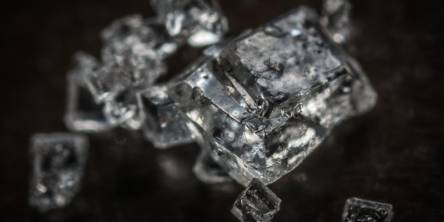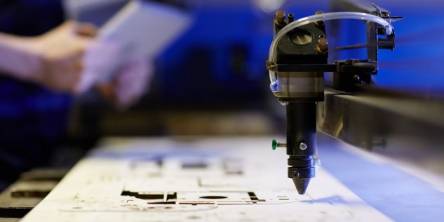Explaining the Oxygen Challenge for High Resistivity P-type Silicon Wafers
The main challenge for higher resistivity silicon material is to control the behavior of interstitial oxygen involved during the growth of Si crystals. The concentration of interstitial oxygen is generally higher than 5E17at/cc and it can be converted beneficially into oxygen precipitates below the area to eliminate metallic contaminants away from active devices.
In P-type silicon wafers, thermal donors used to increase the resistivity of the Si wafer until the concentration of the thermal donor exceeds the P-type carrier concentration. At this point, the wafer will appear to be n-type. Calculations here are generally based on experimental data illustrating the influence of thermal donors. It is shown on a 50 ohm-cm P-type wafer resistivity for different interstitial oxygen levels.
Chemical and crystallographic defects are a reality of solar-grade silicon wafers and industrial production processes. As we all know Silicon is a commonly used semiconductor, which means that it has a high resistance to the electricity. However, the resistance is not as high as an insulator such as rubber. Pure silicon used to have electrical properties, which are manipulated by other elements and called “dopants”. These dopants determine the type of silicon, positive or negative, and also change the resistivity of the silicon.
Dopants basically decide whether the final Si wafer will be a P-type wafer or an N-type wafer. Furthermore, the amount of dopant determines the final resistivity of the wafer. P-type silicon wafer are manufactured by using only one type of dopant, called as Boron, which you can also see in the periodic table as B. The volume of Boron present in the silicon wafer determines the resistivity. It is believed that the less Boron present in Si wafer means higher the resistivity. The relative abundance of P-type silicon wafers tends to keep the cost less than N-type wafers.
How to consider the cost of Si Wafers?
Each Si wafer must be particle-free. If there is a single particle on a polished wafer, it will adversely affect the functionality of the wafer. Due to this, calibration usually involves a traceable particles standard in order to determine the quality and cost of the fabric. There are different grades used to classify wafers. If wafers are larger than one hundred and fifty millimeters, then it usually is divided into test and mechanical test varieties.
However, Mechanical test varieties are used predominantly for equipment designed for testing and have an influence on structural and dimensional characteristics. A monitor wafer, also known as process test wafers is used in semiconductor fabrication and process monitoring. Particle silicon wafers are mainly designed to be used for measuring the actual particles. You must understand the difference between n and p-type silicon wafers to navigate the market and make price comparisons easier.
The Si wafer manufacturing process is highly complicated and tedious. It includes a number of sequential processes that are required to create an electronic circuit. As the demand for semiconductors will increase continuously in the future, manufacturing companies to speed up the manufacturing process to handle the demand.
If you are involved in the Si wafer manufacturing industry, then it is important for you to understand the complete manufacturing process. Just like with any products, quality and price vary, and the same applies on silicon wafers. It is highly advisable to learn about p-type silicon wafers in order to determine its resistivity and right usage. You can begin your research online, and find out numerous silicon wafer manufacturers in your area. Contact multiple manufacturers to get the best quote available for your work and take decision accordingly.
Similar Articles
When you see a steel ship in the harbor, the first impression is usually sheer scale.
Explore CNC turning—its components, process, benefits, applications, and future trends shaping modern precision manufacturing in various industries.
In the competitive industry of car manufacturing, attaining exceptional performance along with an innovative design needs the incorporation of modern manufacturing technologies
Facing delays, quality issues, or supply chain problems in hardware manufacturing? Learn the top 7 challenges—and practical fixes—to streamline production.
In the rapidly advancing landscape of high-tech manufacturing, electronics, and materials science, diamonds are no longer just gemstones they’re high-performance materials redefining what’s possible in technology.
A business in the manufacturing industry today has to ensure that it chooses the precision-engineered components suppliers keenly since the competition is very stiff
Selective Laser Sintering, or SLS, has established itself as one of the most reliable and widely used 3D printing technologies. This method is valued for its ability to produce complex, durable, and high-quality parts without the constraints of traditional manufacturing.
In the retail and display industry, the visual appeal of products is paramount. Customers are constantly drawn to displays that are not only eye-catching but also provide an immersive experience.
As previously established, CO2 laser technology operates by shining a high-power infrared beam on a mixture of gas that contains carbon dioxide, nitrogen, and helium. This technology is well known for the fact that it is able to engrave onto a variety of materials such as wood, glass, plastic, leather, and even some metals with high precision and without contact.









